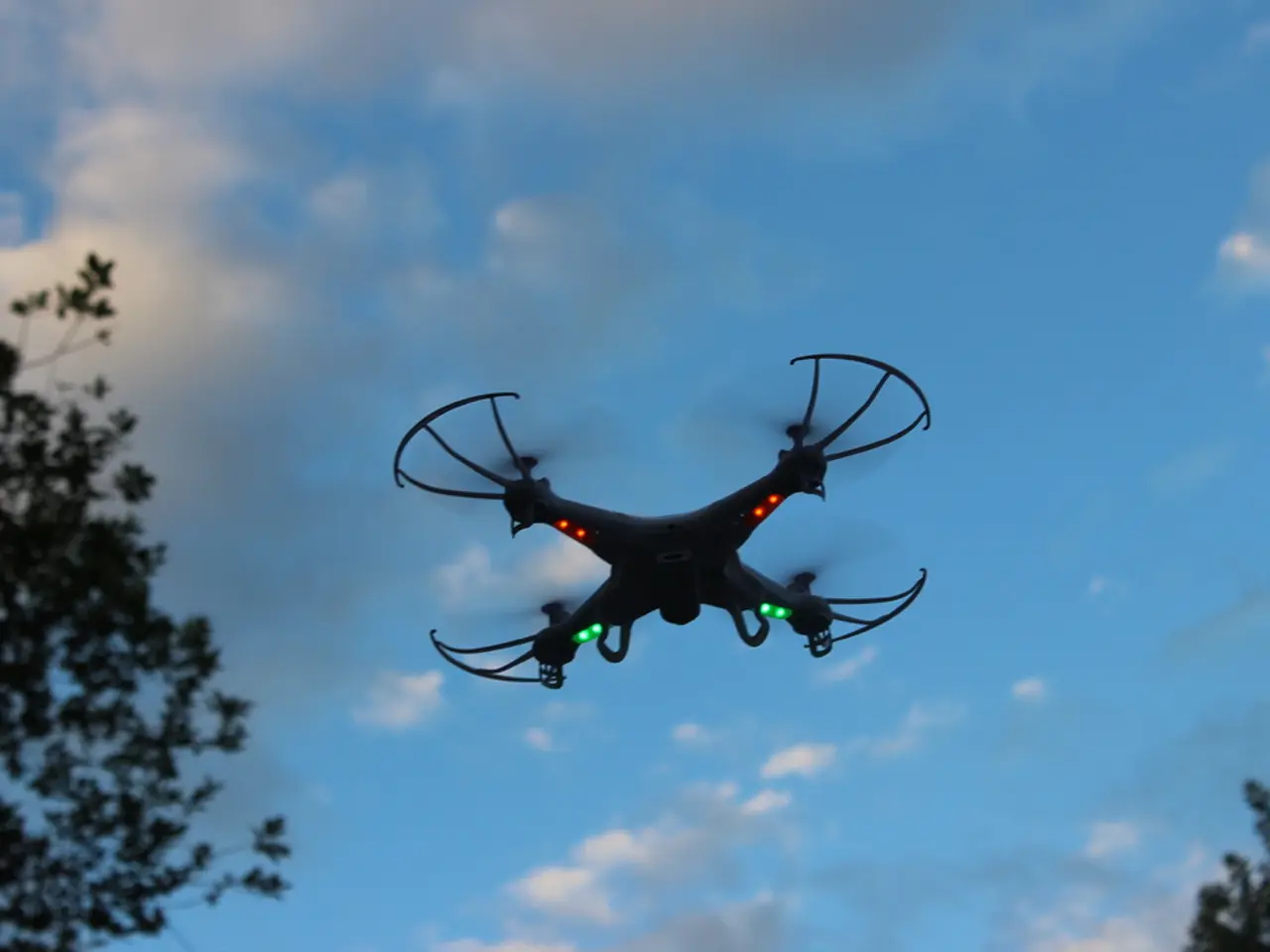UAE Deploys AI-Equipped Drones for Transformative Telecom Infrastructure Inspections
The United Arab Emirates (UAE) has taken a significant step towards modernising its telecom infrastructure with the launch of an autonomous drone-based cell tower inspection system. This innovative system, powered by artificial intelligence (AI), offers a multitude of benefits and implications for the nation's digital landscape.
One of the key advantages of this new system is its enhanced inspection efficiency. Equipped with long flight times (up to 49 minutes) and precise laser rangefinder technology, the drones can perform full cell tower scans in a single mission, reducing inspection time compared to traditional methods.
Safety is another significant benefit. By reducing the need for human inspectors to physically climb or access hazardous locations on tall towers, the autonomous drones minimise risks associated with dangerous work.
The AI-powered autonomy also enables regular and automated inspections, leading to more consistent maintenance and early fault detection, which improves network reliability. Moreover, the drones are equipped with multiple sensors, such as laser rangefinders and cameras, that collect comprehensive, high-quality data under varied conditions, enabling accurate assessment and decision-making.
In terms of cost reduction, the system automates inspections and reduces dependence on human operators and climbing equipment, leading to lower operational costs. Furthermore, the system aligns with the UAE's vision for smart, sustainable cities, as it is more sustainable than traditional inspection methods.
The AI-driven analytics of the drones can also detect structural anomalies for preventive maintenance, helping extend the life of critical assets. Each drone mission generates actionable data for the UAE's digital infrastructure systems, supporting predictive maintenance and optimised asset management.
The operational transformation for telecom operators in the UAE is significant, as they can move from manual to remote, drone-based techniques that enhance operational workflows and decision-making. However, the system must navigate regulations on drone flights near critical infrastructure.
Successful implementation requires investment in drone platforms, autonomy software, and operator training to manage missions and interpret data effectively. The system's successful deployment is expected to result in improved network reliability and a better customer experience, with more frequent and detailed inspections preventing outages and optimising maintenance schedules.
In conclusion, the UAE’s AI-powered autonomous drone inspection system significantly improves inspection speed, safety, data quality, and cost-efficiency for telecom infrastructure, while supporting digital transformation and regulatory compliance in infrastructure monitoring.
- The implementation of this technology, powered by artificial intelligence (AI), fosters innovation in the UAE's telecom sector, implementing autonomous drone-based cell tower inspections.
- By automating inspections and reducing human intervention, the system not only enhances safety but also contributes to the sustainability agenda, as it is more efficient and eco-friendly than traditional methods.
- With AI-driven analytics, the drones can detect structural anomalies, facilitating preventive maintenance, and extending the life of critical assets, thereby ensuring the future readiness of the UAE's digital infrastructure.
- Embracing this technology will lead to a safer, smarter, and more reliable digital landscape in the UAE, where autonomous drones support predictive maintenance, optimised asset management, and improved customer experiences.




